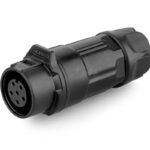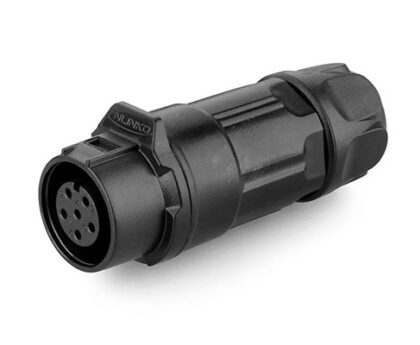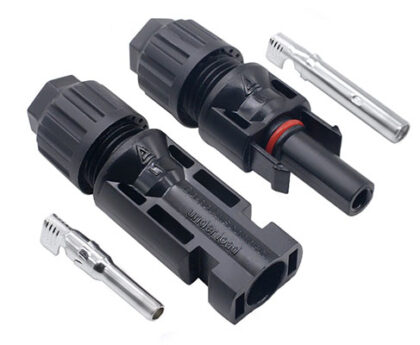Space exploration has always been a fascinating topic, with explorers venturing beyond our planet to discover the mysteries of the universe. In the quest for exploration, space technology has advanced significantly, with several innovations designed to withstand the extreme conditions found in space. One of the most crucial innovations for space technology is the development of space-rated connectors. These connectors play a crucial role in ensuring the success of space missions, and in this blog post, we will explore what makes them different.
What are Space-Rated Connectors?
A connector is a device used to join two electrical circuits or wires, allowing for the flow of electricity between them. In space, where conditions are harsh and extreme, connectors must be designed and built to withstand these conditions. Space-rated connectors are specialized connectors designed specifically for use in space applications. They are used in a wide range of space systems, including spacecraft, launch vehicles, satellites, and space stations.
Space-rated connectors are designed to be durable, reliable, and able to withstand the harsh conditions of space, including extreme temperatures, radiation, and vibration. They are designed with specific features that allow them to function effectively in space, and they must meet strict testing requirements to ensure their reliability.
What Makes Space-Rated Connectors Different?
Space-rated connectors are different from standard connectors in several ways. The unique challenges of the space environment require specialized connectors with specific features that standard connectors do not have. Some of the key features that distinguish space-rated connectors from standard connectors include materials, construction, and testing.
Materials and Construction of Space-Rated Connectors
One of the most critical features of space-rated connectors is their materials and construction. These connectors are made from specialized materials that can withstand the extreme conditions of space. They are designed to be lightweight yet durable, with high resistance to vibration, radiation, and temperature fluctuations.
Space-rated connectors are typically constructed using advanced manufacturing processes, such as injection molding and precision machining. These processes allow for the creation of complex shapes and designs that are essential for space applications. Additionally, these connectors often use specialized coatings or plating to enhance their durability and resistance to wear and tear.
Testing of Space-Rated Connectors
Space-rated connectors must undergo rigorous testing before they can be used in space applications. This testing is designed to ensure that the connectors can withstand the harsh conditions of space and function reliably. The testing process typically includes a range of tests, such as thermal cycling, vibration testing, and radiation exposure testing.
Thermal cycling tests expose the connectors to extreme temperature fluctuations, simulating the conditions of space. Vibration testing involves subjecting the connectors to high levels of vibration to ensure their resistance to mechanical stress. Radiation exposure testing is designed to assess the connectors’ ability to withstand exposure to ionizing radiation, which can damage electronic components.
Applications of Space-Rated Connectors
Space-rated connectors are used in a wide range of space applications. They are critical components of space systems, ensuring the reliable transmission of data and power. Some of the most common applications of space-rated connectors include:
- Satellites: Satellites use space-rated connectors to transmit data and power between different components. These connectors must be able to withstand the harsh conditions of space and function reliably for long periods.
- Launch Vehicles: Launch vehicles use space-rated connectors to transmit data and power between different components, such as the rocket engines and the control systems. These connectors must be able to withstand the extreme vibrations and temperatures during the launch process.
- Spacecraft: Spacecraft use space-rated connectors to transmit data and power between different components, such as the sensors and the communication systems. These connectors must be able to withstand the harsh conditions of space, including radiation and temperature fluctuations.
- Space Stations: Space stations use space-rated connectors to connect different components of the station, including modules, power systems, and communication systems. These connectors must be able to withstand the long periods of exposure to space radiation, extreme temperature fluctuations, and constant vibration.
Future Developments in the Field of Space-Rated Connectors
As space exploration cntinues to advance, the demand for space-rated connectors will only increase. In the future, we can expect to see further advancements in the materials and construction of these connectors, as well as improvements in their testing and reliability.
One area of development is the use of nanotechnology to improve the performance of space-rated connectors. Nanotechnology involves the manipulation of materials at the nanoscale level, allowing for the creation of materials with unique properties. These materials could potentially improve the durability and reliability of space-rated connectors, making them even more effective in space applications.
Another area of development is the use of additive manufacturing, also known as 3D printing, to create space-rated connectors. Additive manufacturing allows for the creation of complex shapes and designs, making it easier to create connectors that are tailored to specific space applications. Additionally, this technology allows for faster production and lower costs, making it an attractive option for space exploration.
Conclusion
Space-rated connectors are critical components of space systems, ensuring the reliable transmission of data and power in harsh and extreme conditions. These connectors are different from standard connectors due to their specialized materials, construction, and testing requirements. As space exploration continues to advance, we can expect to see further developments in the field of space-rated connectors, improving their durability, reliability, and effectiveness in space applications.




